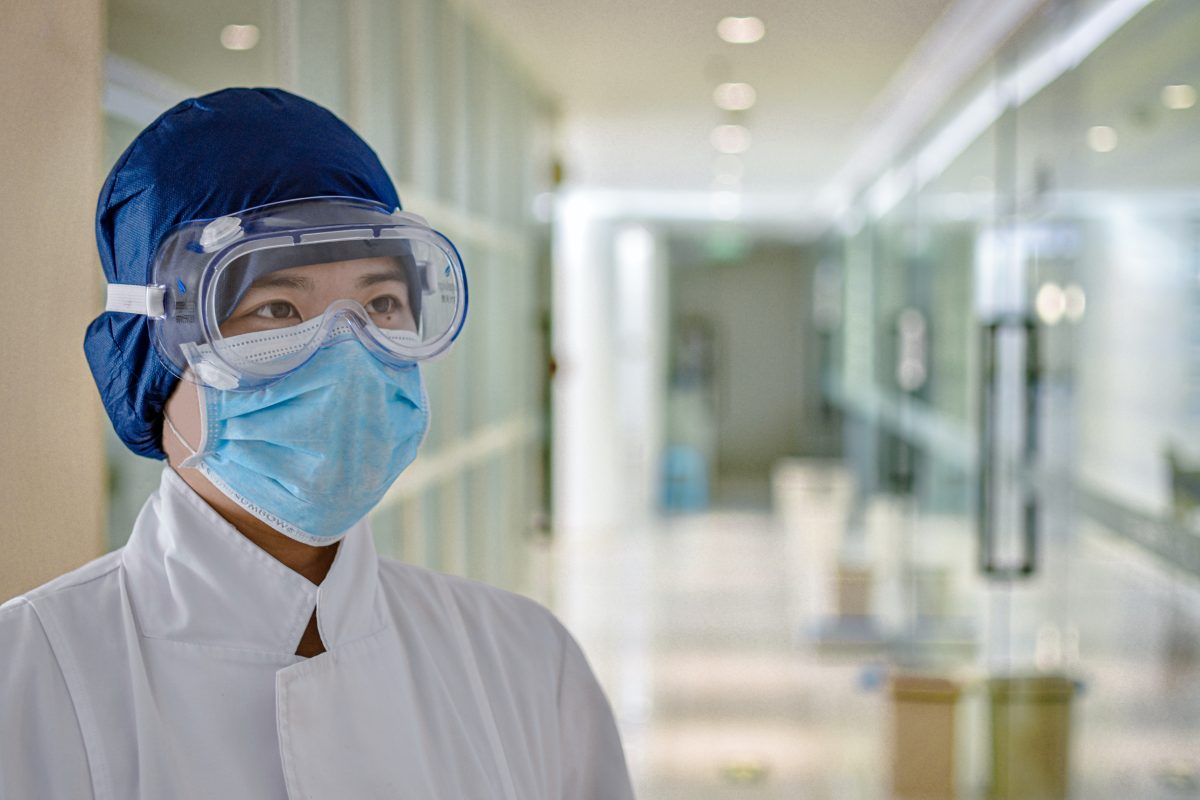
New Design Will Allow Manufacturers to Mass-Produce PPE for Healthcare Workers
University of Massachusetts Amherst via News-Medical Net – In just under two weeks, researchers at the University of Massachusetts Amherst, with engineers, nurses and other health care professionals, have developed a design informed by clinical feedback for protective plastic face shields as the nation combats the spread of the coronavirus.
It will be made available to manufacturers to mass-produce personal protective equipment (PPE) for health care workers and others.
A Southbridge, Mass., company, K+K Thermoforming, is now producing the first order of 80,000 shields placed by the Face Shield COVID-19 Response Team at UMass Amherst. Shields will be distributed to medical facilities and other front-line responders in the region before an expected virus peak in mid-April, says Institute for Applied Life Sciences (IALS) director Peter Reinhart, who helped to organize a number of UMass Amherst COVID-19 Response Teams.
The company says it will continue production based on demand, he adds. UMass Amherst has contributed more than $30,000 for the initial order, as well as the hundreds of volunteer hours spent designing, testing, revising and manufacturing the shields, Reinhart said, noting, “The campus response to requests for help to address COVID-19-related shortages has been extraordinary.” More than a dozen COVID-19 response teams on campus are working to help healthcare workers and others with needs, from face shields to ventilator parts to viral transport medium for virus tests.
Members of the face shield and IALS teams are approved to be in a lab for the COVID-19 response, but most work is done remotely, they say, and many team members have never met.
Face shield team leaders Frank Sup and Meghan Huber of mechanical and industrial engineering at UMass Amherst say a variety of engineering, nursing and other researchers teamed up to meet the need.
“Given the number of requests we receive on a daily basis, we know the need is dire. They’re in crisis mode, that’s why we’re working so quickly.” (Meghan Huber of mechanical and industrial engineering at UMass Amherst)
Sup recalls, “We knew existing supply chains were not keeping up with demand and needed to turn to alternative manufacturing options for this emergency. We also knew that package manufacturing companies had the materials on hand that might be underutilized. We found these manufacturers could scale up the production of face shields in a matter of days to meet the vast and urgent need. All they needed was the design.”
How Face Shields Mitigate Risk of Contamination
A face shield protects the eyes and can be worn over an N95 mask to mitigate the risk of contamination, says Huber. It is made from a single, flexible sheet of 0.010-inch plastic film designed and tested in IALS’s Advanced Digital Design and Fabrication (ADDFab) Lab, says core facility director David Follette. It folds to wrap around the forehead and fastens securely at the back with no added materials needed.
This is important, Follette adds, because 3D printing a strap, for example, is slow and inefficient. “You could use all the 3D printers in the world but it’s never going to be as fast as laser-cut or die-cut plastic sheets. We decided early that our product would have to be not only effective, but cheap and fast,” he says. To supply large quantities requires high-volume manufacturing, he adds. Their final design can be made in seconds. It’s flat for easy storage, Sup notes, and its light weight makes shipping more affordable.
Important Input from Nurses
Testing the shield’s clinical usefulness was assisted by nurses and technicians from the College of Nursing. Associate Professor and AAAS Invention Ambassador Rachel Walker and Ph.D. student Ellen Smithline say they are impressed that the IALS designers sought user perspectives. Walker, with emergency nursing experience from other large-scale humanitarian disasters, says, “Nurses are so close to what the challenges are, you avoid a lot of pain by working with them early. Your product may be beautiful, but it may not function for the people and providers who actually have to use it.”
Smithline agrees. “Nationally, it’s unusual to include nurses at the beginning. The UMass project shows what you can accomplish if you have a good collaboration.” She and Walker asked area colleagues to use and provide feedback on a series of prototypes.
Based on this, Smithline, with 26 years of ER experience including with SARS and Ebola, and her ER physician husband, Dr. Howard Smithline, suggested modifications – a longer strap to adjust to head size, pony tails, glasses and safety goggles. Smithline knew fogging can be a problem, so the team investigated pre-coating with anti-fog material.
Not only should PPE be comfortable, Smithline suggested, she wanted a place for the care provider’s name “because eventually everyone looks the same if you’re wearing an N95, head covering, safety goggles and gown. You may not know who you are talking to. It’s also important to have good vision to provide safe care without fear of exposure.”
Walker says it was important to get input from home care agencies, hospices and others. She says, “Delivering health care in a disaster is a very haunting and horrible thing. I have deep empathy for my colleagues who are going through this right now.”
To find local manufacturers, IALS’ Reinhart turned to Jim Flynn, the new assistant dean of research business development at the College of Information and Computer Sciences. He says, “When I call a company and say I’m with a UMass Amherst COVID-19 Response Team and we need help making equipment for healthcare workers, they patch me through to the president. Being from UMass Amherst gives us instant credibility.”
Among many others, Huber, Sup and Follette salute technical staff Colby Norwood in the mechanical engineering department’s machine shop and Asmit Jain in the IALS ADDFab Lab for their tireless contributions. Reinhart adds, “The COVID-19 crisis has forced us to rapidly explore new ways of collaborating against a backdrop of social distancing. The effectiveness of the ‘virtual team’ model has been spectacular.”
To read the original article click here.






